|
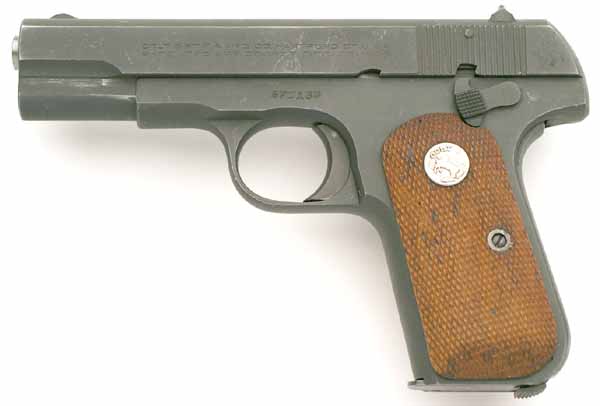
Colt Model M .32 ACP issued to Brigadier General
George Robinson Mather (West Point Class of 1932) before
1959. There is a record that this pistol was
returned by General Mather in 1960. There is also a record
of General Mather receiving Colt Model M .32 serial number
571670 on 9/11/1964.
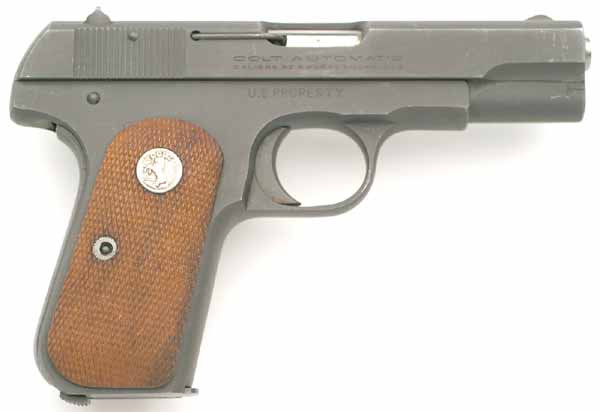
| General Orders No. 17 |
|
GO 17
Headquarters
Department of the Army
Washington, DC, 2 August 1993 |
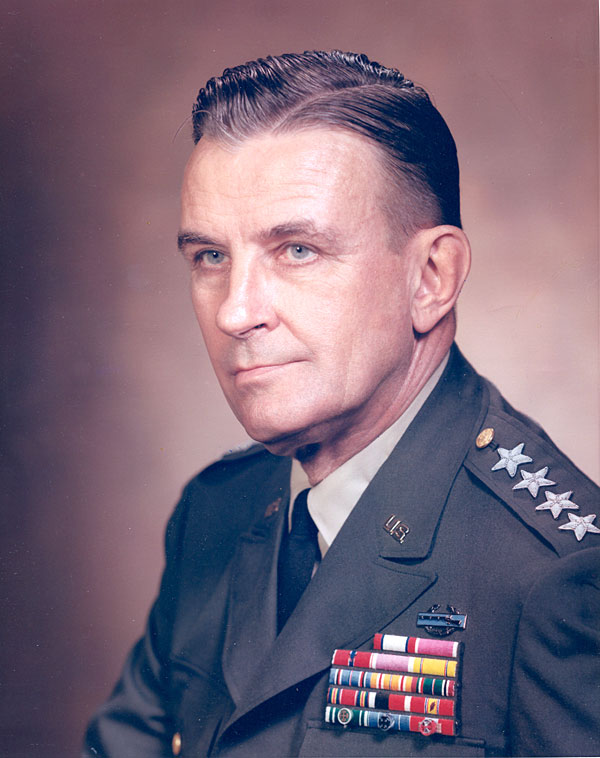
GENERAL GEORGE ROBINSON MATHER
The death of General George Robinson Mather, on 1 January
1993 in Southern Pines, North Carolina, is announced with
deep regret. His last I duty assignment was as Commander in
Chief, United States Southern Command.
General Mather was an officer of the highest ideals. His
courage, sound judgment, and superb leadership produced
brilliant military achievements of the greatest value to his
country. With his passing the nation has lost a faithful,
valiant servant and the United States Army, a commander of
great stature.
General Mather was born in Watertown, South Dakota on
June 2, 1911. He was appointed to the United States Military
Academy and in 1932 he graduated and was commissioned a 2nd
Lieutenant in the Calvary.
General Mather commanded every type of tactical
organization from cavalry platoon to armored division to
Army Corps. He studied Spanish at the University of Mexico
in 1937 and then taught Spanish at the U.S. Military Academy
for four years.
During World War II, he served as Executive Officer of
the 110th Infantry Regiment of the 28th Infantry Division.
From 1946 to 1948, General Mather served on the Staff of the
Caribbean Command in the Panama Canal Zone. This began a
lengthy association with Latin American countries. Following
an assignment as Chief of Staff, Fourth United States Army,
Fort Sam Houston, Texas in 1961, he was assigned as
Chairman, United States Delegation, Joint Brazil-United
States Military Assistance Advisory Group in Rio de Janeiro,
Brazil until September 1964.
In 1965 he assumed command of the 2d Armored Division,
Fort Hood, Texas. Following that assignment, he served as
the United States Military Representative to the Permanent
Military Deputies Group, Central Treaty Organization,
Europe, located in Ankara, Turkey. General Mather became the
Commanding General of V Corps, United States Army Europe in
1966 and served there until 1967. He then returned to Fort
Hood, Texas to assume command of III Corps, until 1968. In
July of 1968, he became the first Director of Civil
Disturbance Planning and Operations, Office of the Chief of
Staff, Washington, DC.
His last assignment marked a return to the Panama Canal
Zone where he was the Commander in Chief, United States
Southern Command.
General Mather retired from active duty in 1971 after 38
years of service to the nation. He remained active in his
community after retirement and served two terms as a member
of the Pinehurst Village Council.
For his exceptionally meritorious and distinguished
service, General Mather's awards and decorations include the
Distinguished Service Medal with oak leaf cluster; the
Legion of Merit; the Bronze Star Medal with "V" Device; the
Purple Heart; and the Combat Infantryman Badge.
General Mather's life was characterized by courage,
dedication, vision, and patriotism. These qualities earned
him the respect of all who knew him. The grief caused by the
death of General Mather is deeply shared by all members of
the United States Army.
General Mather is survived by his son, Dr. George R.
Mather, Jr. of Toledo, Ohio, and a daughter Kathleen M.
Bulgin of Greensboro, North Carolina.
JOHN W. SHANNON
Acting Secretary of the Army
DISTRIBUTION:
Active Army, Army National Guard, US. Army Reserve: To be
distributed in accordance with DA Form 12-04-E (block 0037,
requirements for Department of the Army General Orders.
| Born, 2 June 1911 |
|
South Dakota and
admitted to West Point in 1928 from same state,
Cavalry. |
| 1932 |
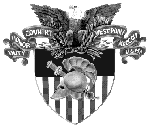 |
Graduated from West
Point, Class of 1932 |
| 1942 - 1944 |
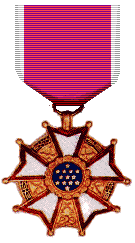 |
War Department
General Staff (Legion of Merit) |
| 1944 -1945 |
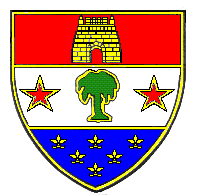
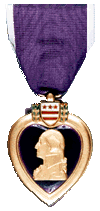 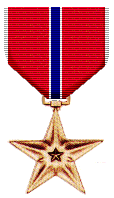 |
Executive Officer
110th Infantry 28th Division European Theater
(Bronze Star Medal; Combat Infantryman Badge;
Purple Heart)
In December of 1944 the 110th played a
significant role at the Battle of the Bulge.
More than 2,700 men were lost in three days of
fighting but the 110th fought on and took a
heavy toll upon the enemy.
|
| 1952 |
|
Army War College |
| 1952 - 1953 |
|
Chief of Staff US
Forces Berlin, Germany |
| 1953 - 1954 |
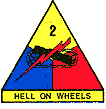 |
Commanding Officer,
CCB 2nd Armored Division, Europe Same as the
insignia of all U.S. Armored Divisions. It is
the shape of an equilateral triangle, divided
into three segments, each a different color. The
Blue segment represents the Infantry components
of the Division: Scarlet, the Artillery, and
Yellow, the Cavalry. The tank track and cannon
in black, topped by a red lighting shaft are
symbolic of armored "blitz" warfare. The black
Arabic "2" in the upper yellow segment of the
triangle indicates the number of the division.
The division's nickname, " Hell on Wheels" in
yellow block letters against an olive
background. |
| 1959 - 1960 |
 |
Asst Commanding
General 7th Division, Korea |
| 1960 - 1961 |
|
Chief of Staff 4Ar |
| 1961 - 1964 |
|
Chairman Joint
Brazil US Military Commission, Rio de Janeiro |
| September 1964 -
July 1965 |
 |
Commanding General
2nd Armored Division
|
| 1966 - 1967 |
 |
Commanding General
V Corps (Distinguished Service Medal): |
| 1967 - 1968 |
|
Commanding General
III Corps |
| 1968 - 1969 |
 |
Div CivDisDA (Div
CivDis Department of the Army) (Distinguished
Service Medal): |
| 1969 - 1971 |
 |
CINC SOCOM
(Southern Command) (Distinguished Service Medal) |
| 1971 |
|
Retired |
| 3 January 1993 |
|
Died |
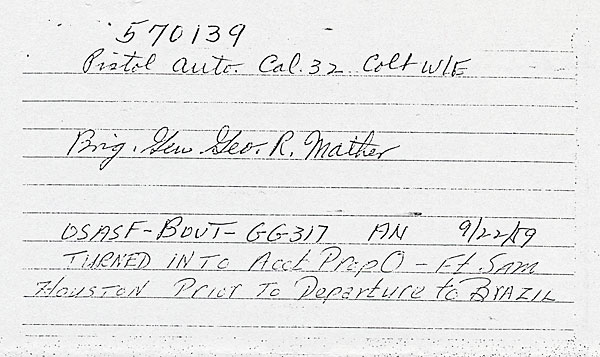
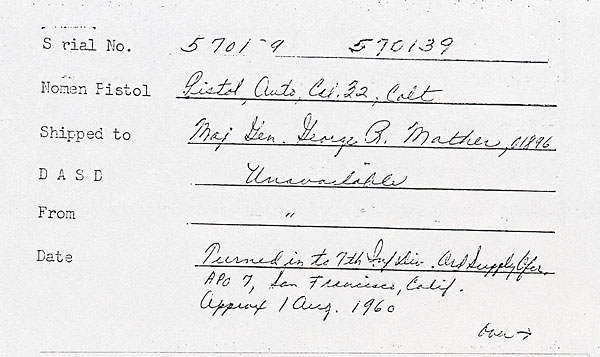

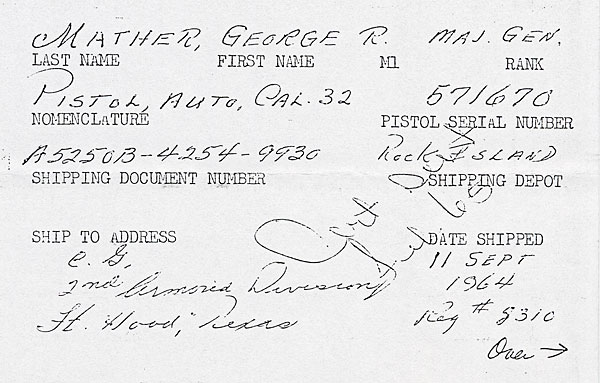

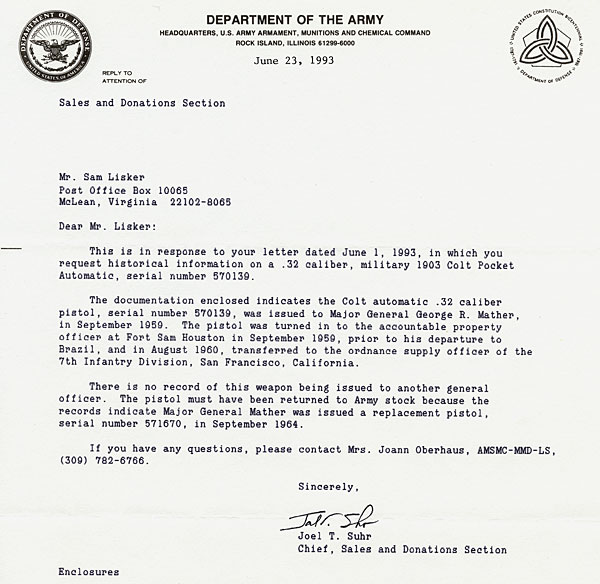
Other links of interest:
http://www.airpower.maxwell.af.mil/airchronicles/aureview/1974/jul-aug/barnhart.html
http://www.ibiblio.org/pub/academic/history/marshall/military/mil_hist_inst/e/elsalv.asc
|